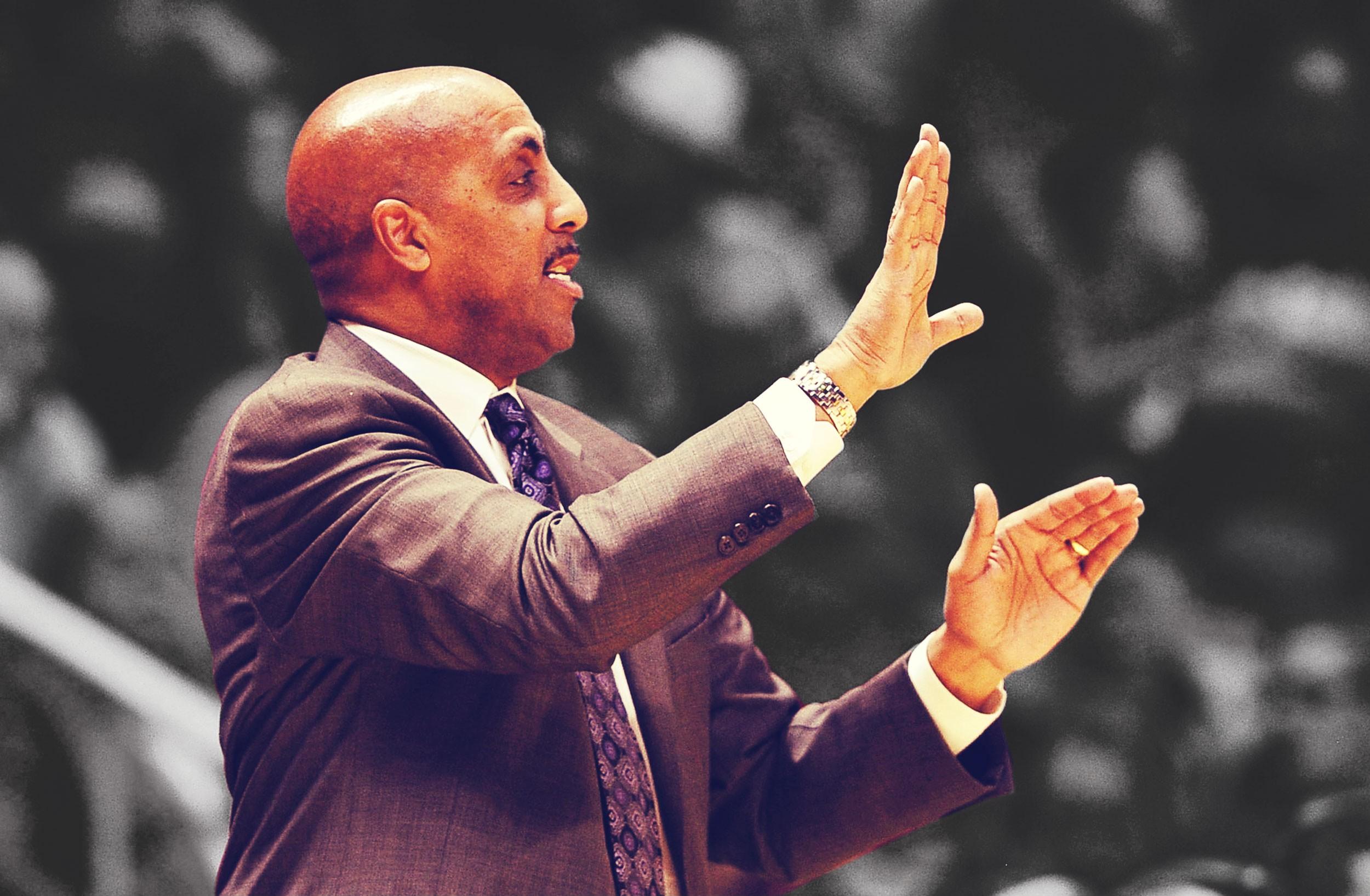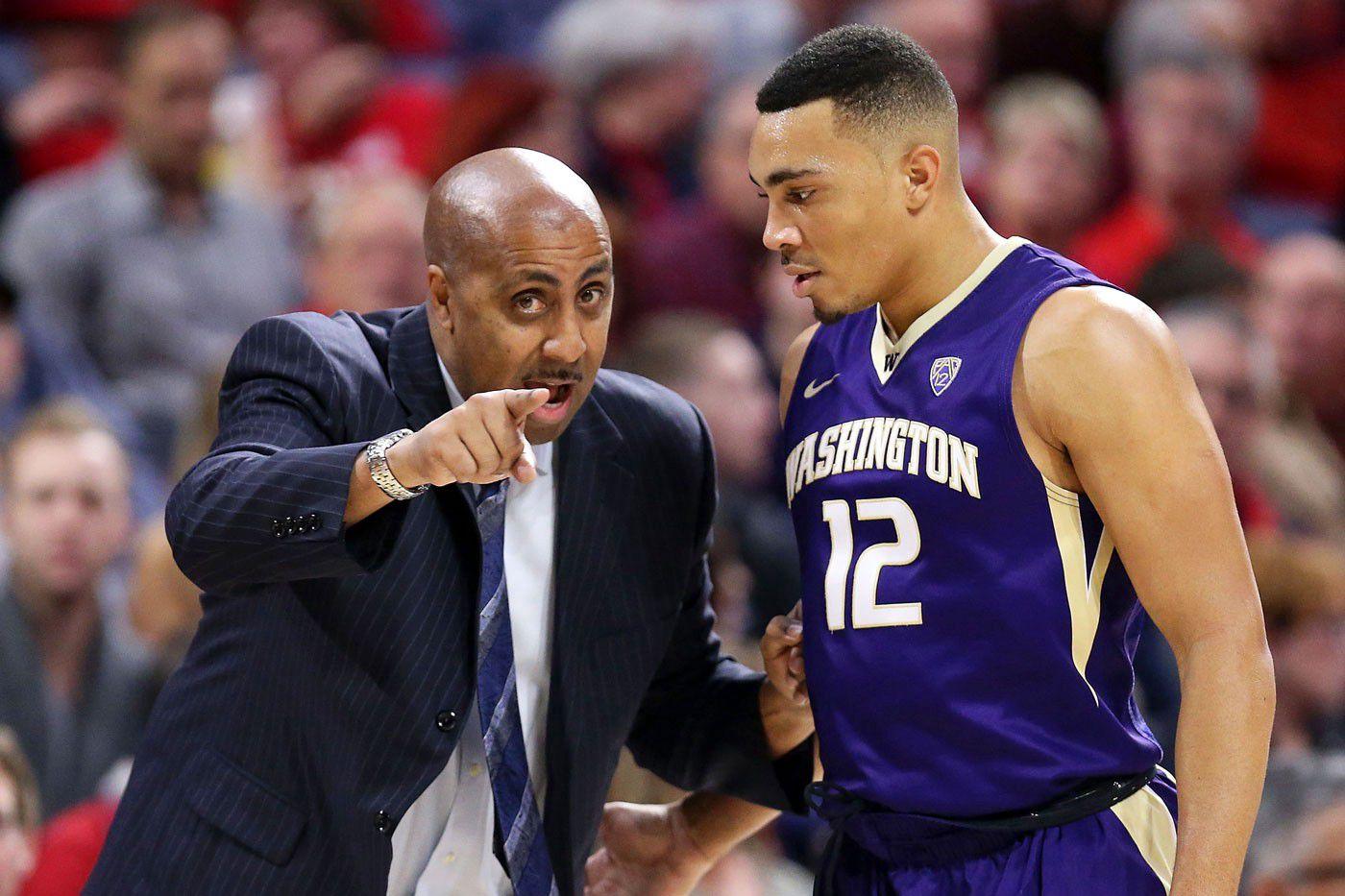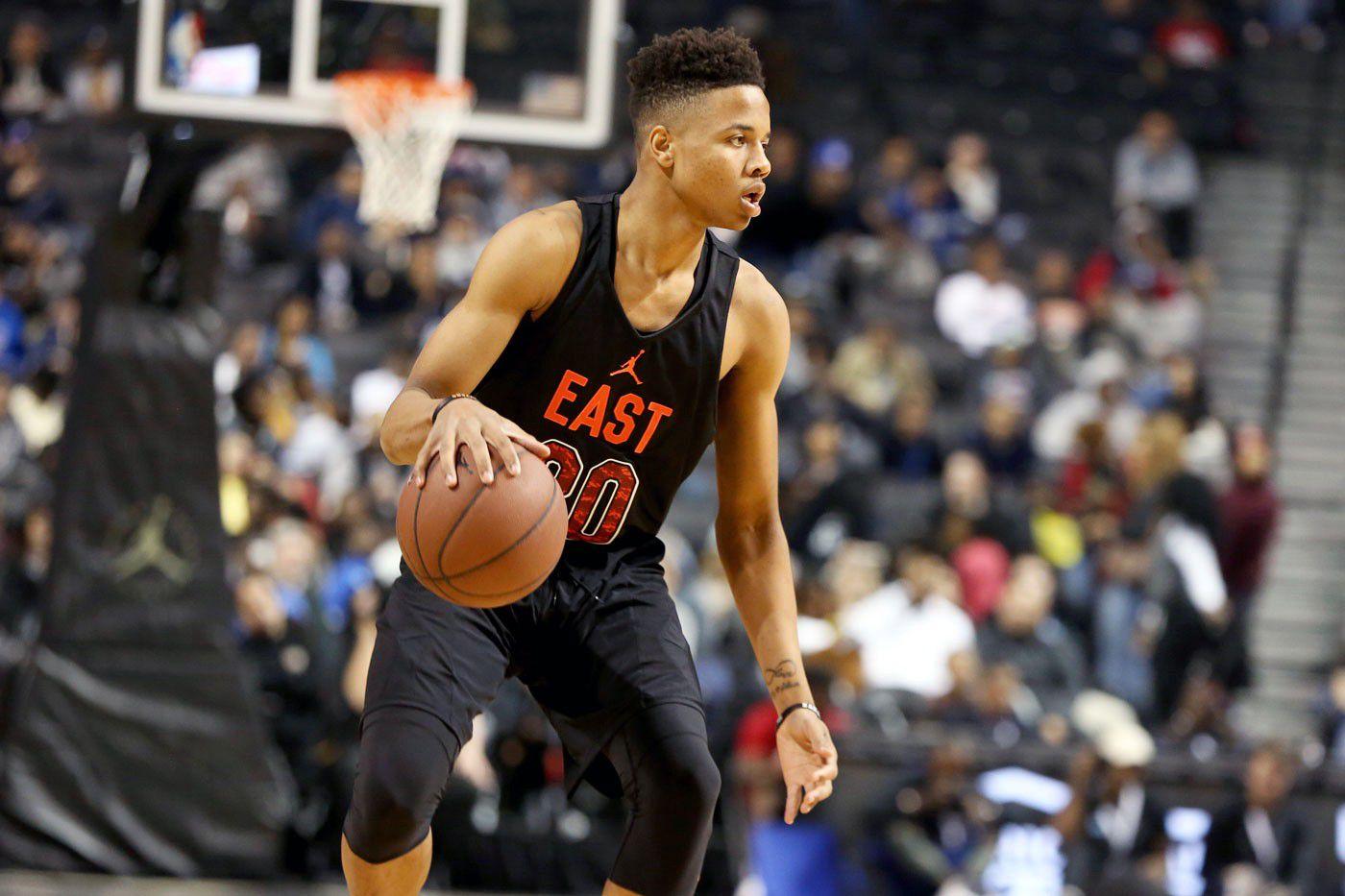Lorenzo Romar’s Last (Last) Chance
Washington’s longtime head coach keeps recruiting top talent and failing to reach the NCAA tournament. Is his job on the line this season?
The time is now for Lorenzo Romar. It has to be. The 57-year-old is about to enter his 15th season as the head basketball coach at Washington, where he has amassed bullet points on his résumé that seem like they couldn’t possibly all be true:
- Thirteen of his Washington players have gone on to play in the NBA, with two more drafted this past summer. Nine were first-round draft picks, and two (Brandon Roy and Isaiah Thomas) became All-Stars.
- Every Huskies team coached by Romar with the exception of the 2014–15 squad has had a future first-round pick on its roster.
- Two Washington teams in the past five seasons (2011–12 and 2015–16) featured multiple first-round NBA draft picks. Neither made the NCAA tournament.
- Romar is the only Power Five coach to miss each of the past five NCAA tournaments at his current job.
- His UW teams have zero Elite Eight appearances and just three Sweet 16 berths.
- He has won two Pac-10/Pac-12 regular-season conference championships.
- His Huskies teams have finished only three seasons with fewer than 10 losses.
Even if you haven’t watched a second of Washington basketball in the past 15 years, you can still draw a pretty obvious conclusion from that list: Romar is a great recruiter who can’t do much with the talent once it arrives in Seattle. This was the case a decade ago, and it has only grown more pronounced since. In recent years, he’s both losing and churning out first-round picks more regularly than ever before, and even the most patient Washington fans have gotten antsy. So, with Romar bringing in yet another future lottery pick in freshman guard Markelle Fultz, the writing appears to be on the wall: Romar has to make the 2017 NCAA tournament to save his job.
Or does he?

We’ve been here before. In fact, you can set your calendar to the Washington basketball cycle. September and October are for claiming the upcoming season is Romar’s last shot. March is for calling for his firing after missing the NCAA tournament yet again. April is for celebrating the prized recruits he signed and talking yourself into thinking that he might know what he’s doing after all. June is for Washington products getting drafted, prompting you to argue with your buddies whether it’s a sign that Romar is great at developing players or that he’s an awful coach who can’t even win with NBA talent. And then September rolls back around and it’s time to give Romar one last (last) chance.
What complicates the Romar situation is that there’s no set criteria for what makes a good college basketball coach. NBA coaches are hired to win games. College coaches are hired to win games, serve as ambassadors for the university, recruit, get guys to the NBA, graduate players, generate fan interest, raise money for the school, keep the team out of trouble, have an impact on the community, and all sorts of other things. Romar is great at a lot of those duties. Which one is most important to fans? The answer is obviously winning, but how many wins does it take to consider a season a success? A 20-win season at Northwestern is cause for celebration, while a 20-win season at Duke leaves Blue Devils fans wondering what the hell went wrong.
That brings me to the most fascinating thing about Romar: He is, basically without question, the best basketball coach in Washington history. The Huskies made just seven NCAA tournaments and three Sweet 16s in the 50 seasons before his hiring; he has made six NCAA tournaments and three Sweet 16s by himself. For all the complaining about what Romar isn’t doing at Washington, you’d think there would be more appreciation for what he has done. If winning is really all that matters, then why are we so quick to criticize a guy who is winning at a pace that no Washington coach has won at since World War II? The truth is, the only reason we notice Romar’s shortcomings is because he’s done a hell of a job at getting our attention in the first place.
That said, college basketball coaching is a what-have-you-done-for-me-lately profession, and those who believe that Romar’s time has passed certainly have compelling reasons to think so. The Huskies have been such a disorganized mess in recent years that if you’re someone who loves to rip on coaches who just roll the balls out and hope that the players will figure it out, Washington games have been something like porn. Romar’s system can be summed up as: Play fast on offense and switch everything on defense. That’s pretty much the laziest approach to basketball strategy that exists. If you don’t know much about the sport and want to see athletic guys fly around a court for two hours, Washington games can be incredibly fun to watch. But if you want to see players who have discipline, execute, value possession, and care even the slightest bit about the score, five minutes of watching Washington basketball is five minutes of your life you’d do anything to get back.

As is usually the case with Romar, though, there is help on the way in the form of yet another high-profile recruit. This time it’s Fultz, a 6-foot-4 point guard who projects to be a top-5 pick in the 2017 NBA draft and is the best prospect Romar has ever landed. Fultz is my favorite player in a freshman class loaded with talent, and it only takes watching his highlight reel on YouTube — the only credible way to evaluate recruits, by the way — to see why. He makes the game look effortless, to the point that it feels like if he can’t do something on the court in the smoothest way imaginable, that means he doesn’t think it’s worth doing at all. If Fultz were left-handed, you wouldn’t hear his name all season without hearing “D’Angelo Russell” mentioned as a comparison somewhere in the same sentence.
The Russell parallels seem particularly apt since Fultz figures to play the same role for Washington this season that Russell played at Ohio State in 2014–15. That, of course, is to say that Fultz will probably have little to no help and will be asked to do pretty much everything for the Huskies. That was certainly the case during Washington’s August tour of Australia and New Zealand, where in the final game of the trip Fultz put up a stat line of 20 points on 28 shots (!!!), eight rebounds, five blocks, and four assists while playing 35 minutes. It’s too soon to know for sure, but there’s a decent chance that Fultz playing 35-plus minutes and attempting 20-plus shots in games will have to be a common occurrence for Washington to have any hope at making the NCAA tournament.
That might explain Romar’s problems more than anything: He excels at landing future NBA players, but his teams are always top-heavy, with one or two stars accompanied by a dozen other guys who are underdeveloped, inexperienced, or just flat-out bad.

Back to the million-dollar question: How hot is Lorenzo Romar’s seat? That’s nearly impossible to answer, because there’s so much more at play here than whether people on the internet feel like he’s winning as much as he should. Romar signed a 10-year contract extension that pays him $1.7 million annually following the Huskies’ Sweet 16 appearance in 2010, thanks in part to his relationship with then-athletic director Scott Woodward. Woodward publicly supported Romar at every turn since that extension, even going as far as to declare, in a February 2015 interview, that Romar “has my full support” and is “doing a tremendous job.” This was despite the Huskies having lost 11 of 14 games — including a stretch of seven in a row — at the time.
In January, Woodward became the athletic director at Texas A&M, creating a vacancy that was filled by Jennifer Cohen, who was promoted from within Washington’s athletic department after spending the much of the past 18 years overseeing the Huskies’ fundraising. And while Cohen said in May that she’s “100 percent behind [Romar] right now,” it’s hard to tell if she truly feels like that or if she’s simply easing into a new job. Either way, Cohen won’t feel the pressure to validate Romar’s 2010 extension like Woodward might have. Plus, her background suggests that money will be her top priority, which is particularly interesting given that Washington’s athletic department operated at a budget deficit of almost $900,000 in the 2014–15 fiscal year and almost $15 million in 2015–16. Romar’s $1.7 million salary isn’t exactly jaw-dropping by college basketball standards, but Washington also wouldn’t have trouble finding a much cheaper option to help it consistently miss the NCAA tournament.
But — and there’s always a “but” with Romar — the Washington coach also has a $3.2 million buyout and two more blue-chip recruits committed to come to campus in 2017 and 2018, both of whom are the sons of newly-hired Huskies assistant Michael Porter Sr. So what’s the smart-money play for Cohen: Eating the buyout and hiring a new coach for much less than the school is paying Romar? Or letting Romar run out his contract and re-evaluating things in 2020? And if the answer is the former, is it worth giving up the recruiting infrastructure that Romar has built over the past 15 years (and the two top recruits he has on the way) to take a chance on an unproven coach (which is essentially all that Washington would be able to afford if it was trying to cut down on its basketball coach salary)? Do you fire a B-minus coach who is the best in school history to roll the dice on a new one who will either be worse than Romar (not a good thing), about the same as Romar (not a good thing), or better than Romar (a good thing) but could leave Washington for a more lucrative job as soon as one opens (not a good thing)? In the best-case scenario, the new coach is about a B-plus and sticks around for a decade or so. Is that worth the risk?
The Huskies are probably not going to be a very good basketball team this season, and they are expected to miss the NCAA tournament for the sixth consecutive year. Yet a Washington player is also likely to go as a top-five pick in the next NBA draft. And because of all the factors in play that go beyond wins and losses, it wouldn’t surprise me one bit to see Romar sitting on the Washington bench again in the fall of 2017. In other words: Keep your seat belts fastened, because there’s a decent chance the Romar roller-coaster ride isn’t going to end anytime soon.